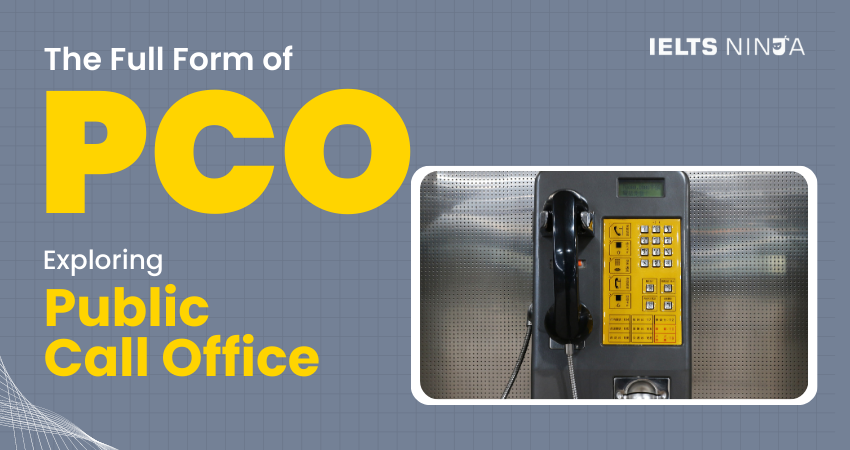In the realm of communication and public services, acronyms often represent entities that play a crucial role in connecting people and facilitating interactions. One such acronym that holds significance in the context of telecommunication services is “PCO.” PCO stands for “Public Call Office.” In this article, we will delve into the full form of PCO, understand its role, functions, and its historical importance in providing public telephone services.
What Does PCO Stand For?
PCO stands for “Public Call Office”. A PCO is a facility that provides public access to telecommunication services, particularly telephone calls.
Understanding PCO
In the earlier days of telecommunication, when personal telephones were not as widespread as they are today, PCOs served as crucial communication hubs. These were establishments where individuals could make telephone calls to their contacts, bridging distances and enabling conversations.
Key Functions of PCO
Public Telephone Access:
The primary function of a PCO is to provide members of the public with access to telephones for making local, long-distance, or international calls.
Communication Services:
PCOs facilitate direct communication between individuals who may not have personal telephones or who need to make urgent calls.
Locational Convenience:
PCOs were strategically placed in various locations, such as markets, neighborhoods, and commercial areas, to provide easy access for users.
Time-Based Usage:
Many PCOs operated on a time-based payment model, where users paid for the duration of their telephone call.
Also Read: Best online IELTS coaching & training academy
Historical Significance: PCOs
PCOs played a significant role before the widespread adoption of personal telephones and mobile phones. They were particularly essential in areas where telecommunication infrastructure was limited, providing a means of communication for those who did not have access to personal phones.
Evolution and Change: PCOs
With the proliferation of mobile phones and digital communication, the need for PCOs has decreased significantly. Mobile phones offer individuals convenient, personal, and immediate communication options, rendering the traditional PCO model less relevant in today’s context.
Nostalgia and Memory: PCOs
For individuals who grew up before the digital age, PCOs hold nostalgic memories of making calls, sending messages, and staying connected to friends and family. They are a reminder of how communication methods have evolved over time.
Conclusion
In conclusion, the Public Call Office (PCO) once served as a vital public telecommunication facility, enabling individuals to make calls and communicate with others when personal phones were not as prevalent. While the significance of PCOs has diminished with the advent of mobile phones and digital communication, they hold a place in the history of telecommunications and the memories of those who used them. As you encounter the abbreviation “PCO” in discussions about communication, remember that it represents a time when public telephone facilities played a critical role in bridging distances and facilitating conversations.








